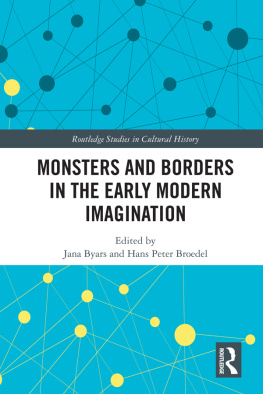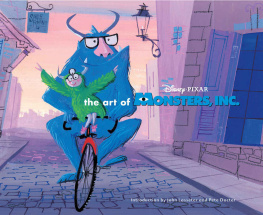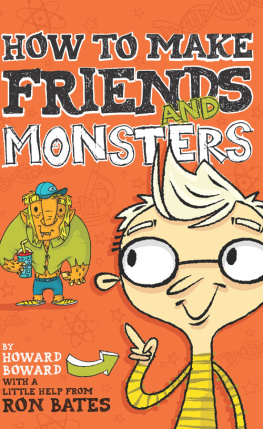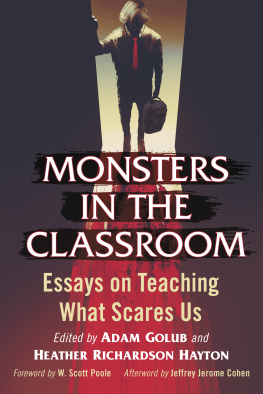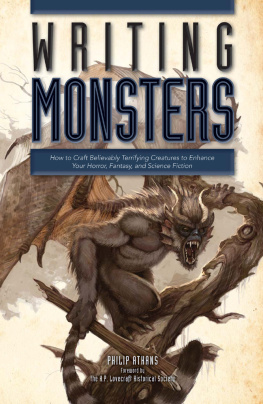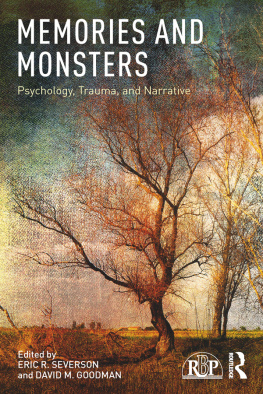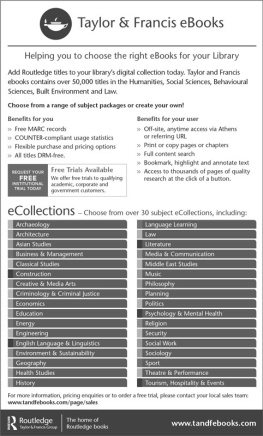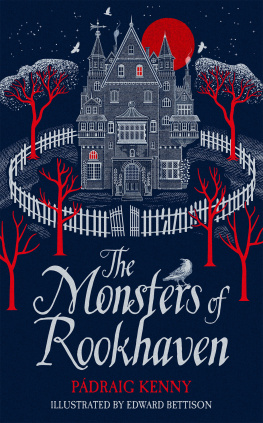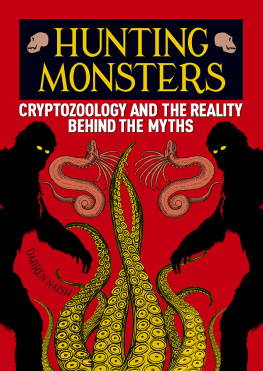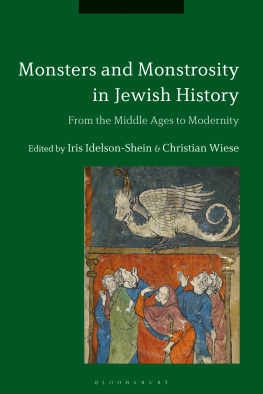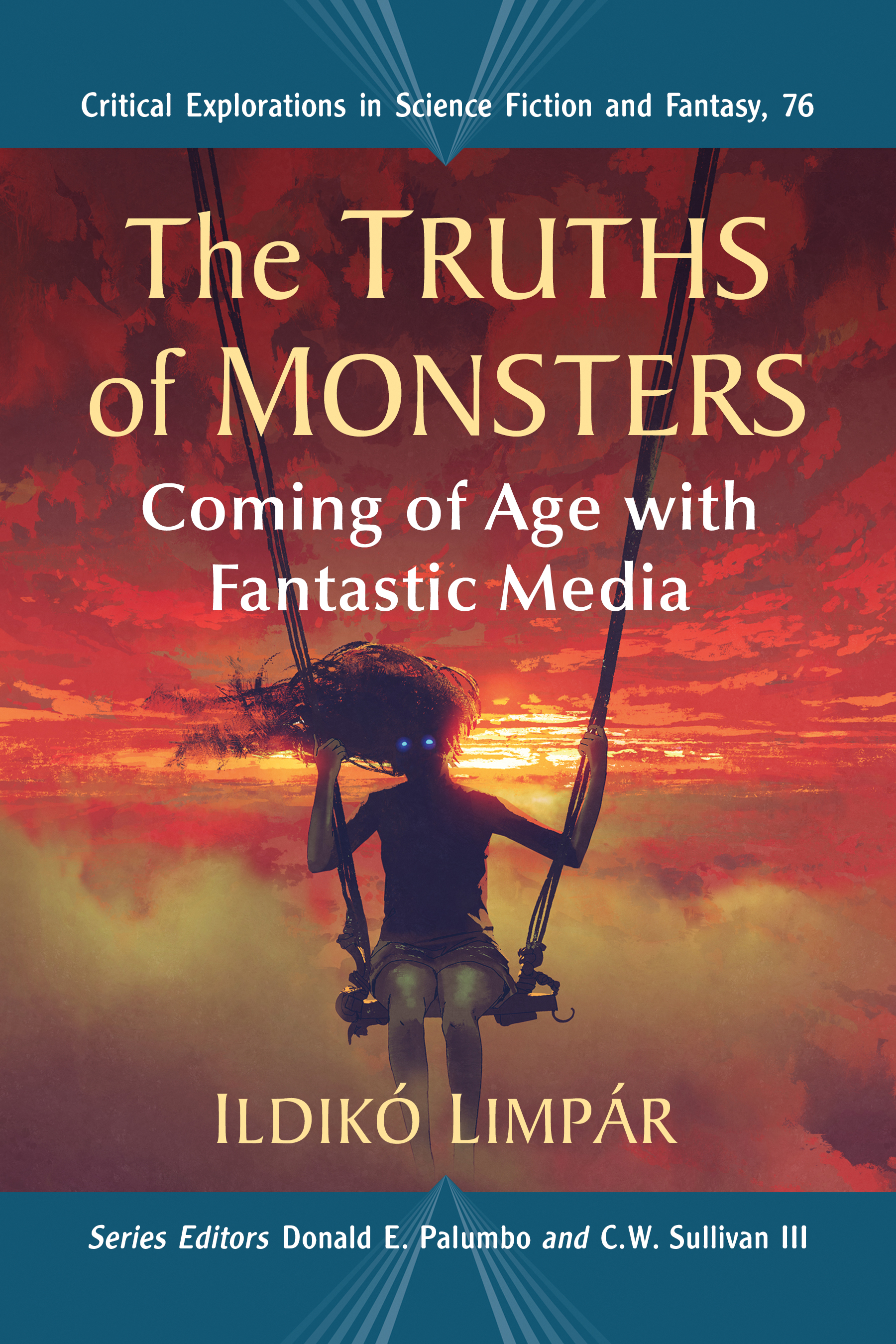The Truths of Monsters
Critical Explorations in Science Fiction and Fantasy
(a series edited by Donald E. Palumbo and C.W. Sullivan III)
Earlier Works: www.mcfarlandpub.com
Recent Works : Gender and the Quest in British Science Fiction Television: An Analysis of Doctor Who, Blakes 7, Red Dwarf and Torchwood (Tom Powers, 2016)
Saving the World Through Science Fiction: James Gunn, Writer, Teacher and Scholar (Michael R. Page, 2017)
Wells Meets Deleuze: The Scientific Romances Reconsidered (Michael Starr, 2017)
Science Fiction and Futurism: Their Terms and Ideas (Ace G. Pilkington, 2017)
Science Fiction in Classic Rock: Musical Explorations of Space, Technology and the Imagination, 19671982 (Robert McParland, 2017)
Patricia A. McKillip and the Art of Fantasy World-Building (Audrey Isabel Taylor, 2017)
The Fabulous Journeys of Alice and Pinocchio: Exploring Their Parallel Worlds (Laura Tosi with Peter Hunt, 2018)
A Dune Companion: Characters, Places and Terms in Frank Herberts Original Six Novels (Donald E. Palumbo, 2018)
Fantasy Literature and Christianity: A Study of the Mistborn, Coldfire, Fionavar Tapestry and Chronicles of Thomas Covenant Series (Weronika aszkiewicz, 2018)
The British Comic Invasion: Alan Moore, Warren Ellis, Grant Morrison and the Evolution of the American Style (Jochen Ecke, 2019)
The Archive Incarnate: The Embodiment and Transmission of Knowledge in Science Fiction (Joseph Hurtgen, 2018)
Womens Space: Essays on Female Characters in the 21st Century Science Fiction Western (ed. Melanie A. Marotta, 2019)
Hailing frequencies open: Communication in Star Trek : The Next Generation (Thomas D. Parham III, 2019)
The Global Vampire: Essays on the Undead in Popular Culture Around the World (ed. Cait Coker, 2019)
Philip K. Dick: Essays of the Here and Now (ed. David Sandner, 2019)
Michael Bishop and the Persistence of Wonder: A Critical Study of the Writings (Joe Sanders, 2020)
Caitln R. Kiernan: A Critical Study of Her Dark Fiction (James Goho, 2020)
In Frankenstein s Wake: Mary Shelley, Morality and Science Fiction (Alison Bedford, 2020)
The Fortean Influence on Science Fiction: Charles Fort and the Evolution of the Genre (Tanner F. Boyle, 2020)
Arab and Muslim Science Fiction ( Hosan Elzembely and Emad El-Din Aysha, 2020)
The Mythopoeic Code of Tolkien: A Christian Platonic Reading of the Legendarium (Jyrki Korpua, 2021)
76 The Truth of Monsters: Coming of Age with Fantastic Media (Ildik Limpr, 2021)
ISBN (print) 978-1-4766-8348-5
ISBN (ebook) 978-1-4766-4374-8
Library of Congress and British Library cataloguing data are available
Library of Congress Control Number 2021005783
2021 Ildik Limpr. All rights reserved
No part of this book may be reproduced or transmitted in any form or by any means, electronic or mechanical, including photocopying or recording, or by any information storage and retrieval system, without permission in writing from the publisher.
Front cover illustration by Tithi Luadthong (Shutterstock)
Printed in the United States of America
McFarland & Company, Inc., Publishers
Box 611, Jefferson, North Carolina 28640
www.mcfarlandpub.com
Table of Contents
Acknowledgments
I would like to thank Pzmny Pter Catholic University for granting me a sabbatical semester in the fall of 2018, during which I could write most chapters of this book, as well as providing me the opportunity to teach several of the novels I write about. Discussing these texts on a regular basis helped me crystallize what interests me the most about monsters and prompted me to turn my research into a focused academic project. I am also thankful for my universitys financial support for the various international conferences that allowed me to discuss and improve my chapters based on the feedback and the knowledge I received.
Heartfelt thanks to Donald E. Morse at the University of Debrecen, who encouraged me to write this book, and Ibis Gmez-Vega at Northern Illinois University, who not only gave me emotional support during writing, but also generously volunteered to read through my manuscript and provide suggestions. I am equally indebted to fantasy writer and Monster Studies scholar Theodora Goss at Boston University, who was very kind to discuss my research on various monsters with me, and who is always ready for a friendly and scholarly chat about the fantastic in the arts.
I work in a very supportive academic environment, and thus I would like to express my great thanks to my colleagues in our Research Group for Popular Culture and the Fantastic in English Speaking Countries: Kroly Pintr, Vera Benczik, Anik Sohr and Kinga Fldvry, all learned scholars and great friends, who continuously inspire me to venture beyond borders guarded by the most fascinating monsters.
Last, but not least, great thanks to my family for being patient with me and making my life less monstrous.
Introduction
Monsters Roaming the Space of Coming of Age
Although literary monsters have occupied the space of fiction ever since we have been writing and reading literature, only a few decades ago did scholars start to focus on the specific issue of monsters and monstrosity, feeling the need to provide a theoretical framework that would allow systematic study in the field. Research in the Gothic and, relatedly, in psychoanalysis is the foundation for modern monster theory. As a result, early interpretations of the literary monster focused primarily on the psychoanalytical aspects of the monster as metaphor, making use of especially Sigmund Freuds concept of the uncanny, Carl Gustav Jungs theory of archetypes and the notion of the abject as explained by Julia Kristeva. This psychoanalytical approach was completed and turned into a more comprehensive theory in 1996, when Jeffrey Jerome Cohen looked into the cultural signification of monsters, extending Foucaults idea that each age has its privileged forms of monsters ( Abnormal 66), since monstrosity is constructed by societys norms defined by its laws. With Cohens openly Foucauldian Monster Culture (Seven Theses), the study of monsters received a new boost: Cohen gave a name to the discipline (Weinstock, Introduction 29) and provided a firm reference point for scholars in the field. Due to the impact of this concise essay on the defining characteristics of monsters, the cultural-historical interpretations of the monstrous have come into the foreground. This approach has prompted the work of important scholars, such as Stephen T. Asma, who in his monograph On Monsters: An Unnatural History of Our Worst Fears (2009) mapped how the concept of monster has evolved in the Western imagination; and this is also the approach Marina Levina and Diem-My T. Bui embrace in their Introduction to Monster Culture in the 21 st Century (2013), where the authors offer a theoretical framework combining three approaches that may effectively be used in monster scholarship: the psychoanalytical, the representational, which is historically conditioned (5), and the ontological. Levina and Buis claim that monster narratives offer a space where society can safely represent and address anxieties of its time (1) clearly echoes Cohens first thesis on monsters, which considers the monsters body as the embodiment of a certain cultural momentof a time, a feeling, and a place, that is, a cultural body (Monster 4).
In the past two and half decades, Monster Studies has established itself as a very diverse and dynamically developing branch of literary scholarship that fruitfully aligns with various disciplines from Social Sciences through Gothic Studies to Film Studies, as, for instance, the recently published The Monster Theory Reader (2020), edited by Jeffrey Andrew Weinstock, demonstrates. Researchers of the Gothic and Horror have long been examining the relationship between child characters and the monstrous, but their focus has mostly been on the representation of the evil and thus monstrous child, or innocent children as the antithesis to and ultimate victims of the monstrous, while they have paid little attention to the ubiquitous presence of the monstrous and the specific roles of monsters in fantasies intended for adolescent readership. The present book, therefore, aims to start filling this gap in the study of the monstrous. Monsters seem to be perfect tools for writing about various aspects of coming of age, which is a major theme of adolescent literature. The reason for this connection between metaphorical monstrosity and youth literature, which discusses the problematics of growing up, lies in the common and related characteristics of the two concepts.


